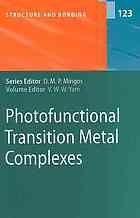

Most ebook files are in PDF format, so you can easily read them using various software such as Foxit Reader or directly on the Google Chrome browser.
Some ebook files are released by publishers in other formats such as .awz, .mobi, .epub, .fb2, etc. You may need to install specific software to read these formats on mobile/PC, such as Calibre.
Please read the tutorial at this link: https://ebookbell.com/faq
We offer FREE conversion to the popular formats you request; however, this may take some time. Therefore, right after payment, please email us, and we will try to provide the service as quickly as possible.
For some exceptional file formats or broken links (if any), please refrain from opening any disputes. Instead, email us first, and we will try to assist within a maximum of 6 hours.
EbookBell Team

5.0
58 reviewsFrom the reviews:
"This book is a collection of six well-illustrated, independent chapters devoted to relevant subtopics. … Overall, this collection of reviews is best suited to specialists, because it delivers less on the fundamentals of luminescent transition metal complexes and more on the exciting developments on selected areas. … In this respect, the volume clearly succeeds by providing up-to-date information on a range of important subtopics in a clear manner that may be expected to inspire new directions in photofunctional inorganic chemistry." (William B. Connick, JACS, Vol. 130 (12), 2008)